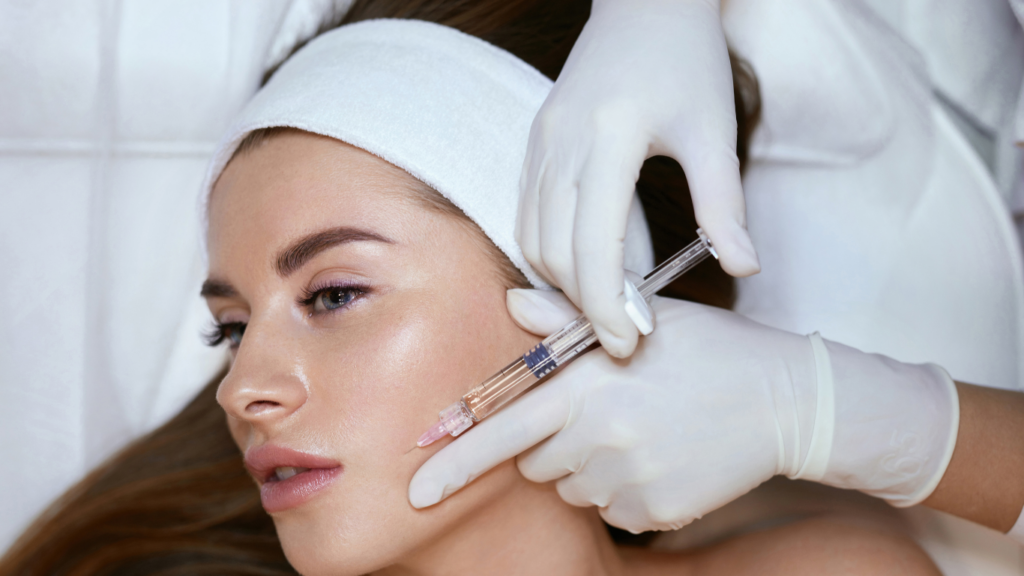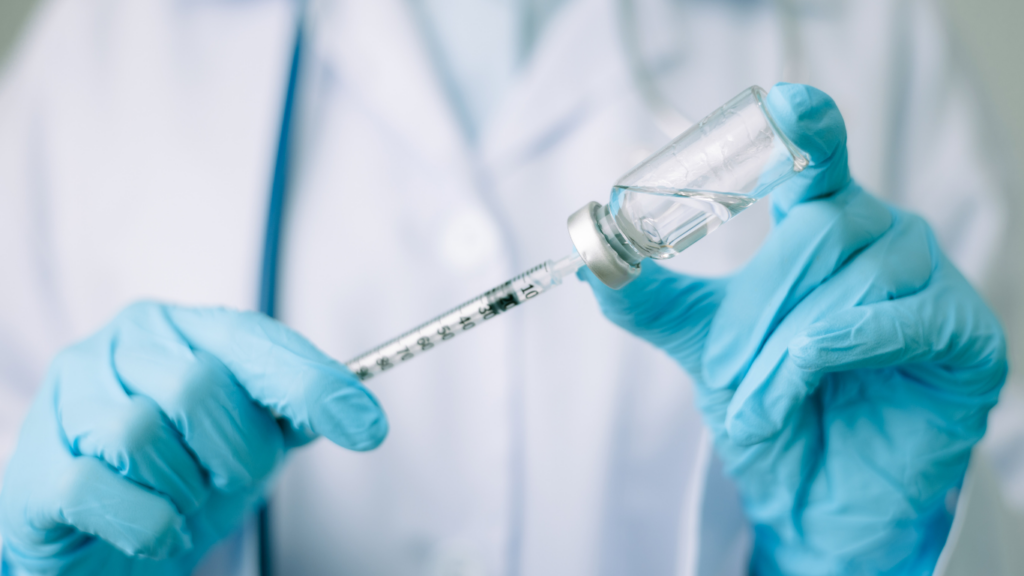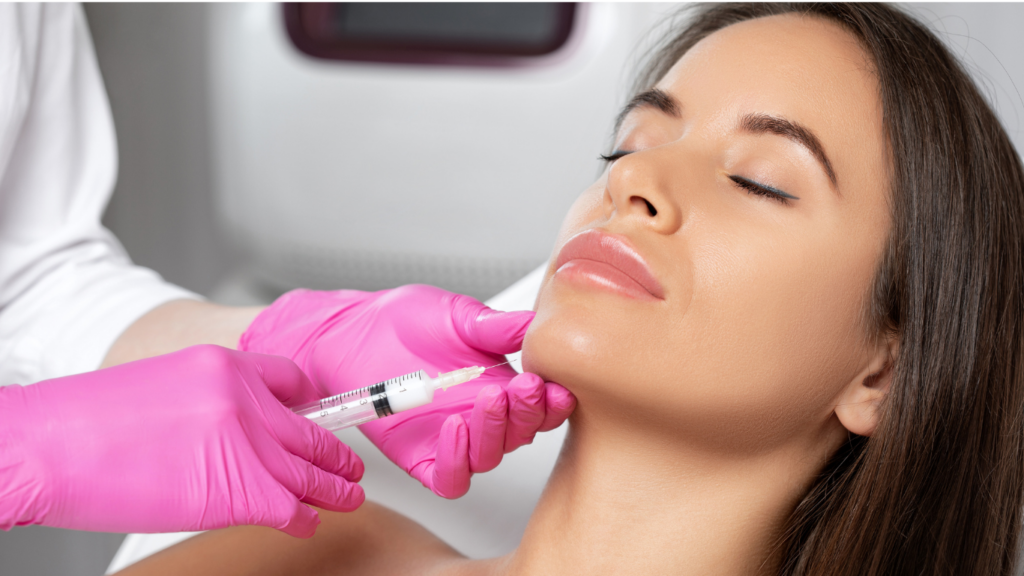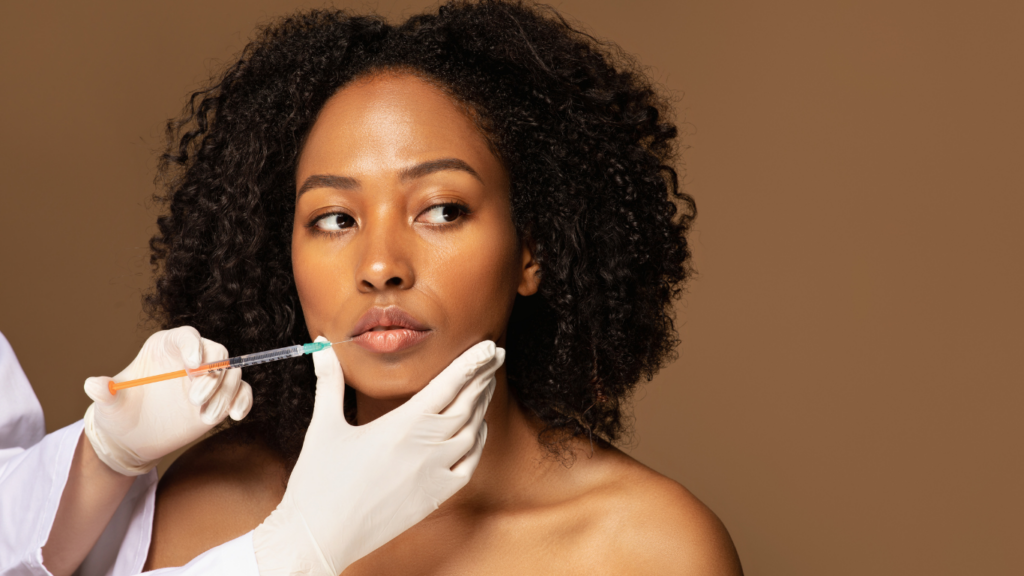There are new skincare ingredients and treatments promising to be a miracle youth elixir every year. This year, polynucleotide injections or salmon sperm injections are that skincare treatment. So, let’s discuss these polynucleotide injections! Are they the real deal or just another fleeting skincare trend? These treatments use molecules derived from fish DNA (hints where the name salmon sperm injections comes from). They have a lot of buzz for their marketed ability to rejuvenate your skin completely.
The science behind these injections is intriguing. However, like any new trend, it deserves a healthy dose of skepticism. Especially before you run to a provider’s office and drop hundreds of dollars. This article examines the evidence. It explains how polynucleotides work (or if they even work!). It also weighs the good and bad points. This will help you decide if this treatment is worth it.
What Are Polynucleotides and How Do They Benefit the Skin?
Polynucleotides are tiny chains of nucleotides. Nucleotides are the fundamental building blocks of DNA. They are the instructions for the cells in your body. They are similar to peptides and exosomes. Scientists want to use them to create anti-aging treatments and products.

Specifically in your skin, they stimulate the skin’s natural repair processes by boosting cell growth, increasing hydration, and reducing inflammation. They also help make more collagen, which keeps skin firm and young. But do they work when injected?
Polynucleotide Injections: What to Expect
Your skin has a barrier. It blocks bad things like pollution. Unfortunately, it also blocks good things, like helpful ingredients. Injections bypass this barrier. They deliver anti-aging ingredients directly to the dermis. This is where they’re needed most. Polynucleotide injections work the same way. They are injected into the skin. This allows for targeted application. It also maximizes the benefits. These injections are marketed to address many skin concerns. These include wrinkles, sagging skin, dryness, redness, and uneven texture.
So, Where Did the Name Salmon Sperm Injections or Salmon Sperm Facial Come From?
Polynucleotide treatments are sometimes called “salmon sperm injections” or “salmon sperm facials.” The name comes from the source of the polynucleotides. They are taken from fish DNA, specifically salmon sperm. The most common type is highly purified polynucleotides (PN-HPT™). The injections are marketed to rejuvenate skin. They boost hydration, improve elasticity, and reduce redness. This makes them such a popular anti-aging treatment. But do not worry! The injections do not actually contain live sperm. They only contain purified DNA fragments. These help the skin heal and renew itself.

So Now the Science… Polynucleotide Injections: What Real Results Can You Expect
Are polynucleotide injections an effective anti-aging treatment? The answer is yes! Salmon sperm injections are much more prevalent in South Korea. Clinical studies and investigative studies with providers that offer this service in their clinics have demonstrated that polynucleotide injections can significantly improve skin smoothness, firmness, and hydration. They can effectively reduce the appearance of wrinkles, particularly fine lines. While they may not wholly erase deep wrinkles, they offer a noticeable improvement in skin quality. Polynucleotides also help firm and tighten skin by boosting collagen production, improving elasticity and a more youthful appearance. They are even effective under the eyes, where they can address concerns like fine lines, dark circles, and thin skin.
There is one caveat: There is not much evidence evaluating them as a stand-alone treatment. In one study, around 230 Korean dermatologists were asked about polynucleotide injections; almost 190 said they use them with other treatments. The polynucleotide injections were typically used with laser or light therapy, hyaluronic acid-based fillers, or botox. This means it is hard to say which benefits are directly related to the polynucleotide injections. The benefits their patient sees could be from the other treatment or the combination of working together to give even better results than either could individually.
Polynucleotide Injection Treatments: What To Expect
Most studies say you need three to four polynucleotide injections for the best results. They are spaced a few weeks to a month apart. They are often used with other treatments. Some providers recommend maintenance treatments every few months to keep the results.

Recovery from polynucleotide injections is usually quick. Most people recover within two days. You might have swelling or bruising for a few days. There is minimal to no downtime. After the procedure, avoid the sun for two days. Don’t do intense workouts for a day. And don’t touch the treated area. It’s also best to avoid alcohol for a day. This is because it can make bruising and swelling worse.
The cost varies. It depends on the clinic, the product, and the area treated. You can expect to pay between $300 and $800 per session. So, the full treatment could cost between $900 and $3200.
Risks and Side Effects of Polynucleotide Injections
Polynucleotide injections are generally considered safe. However, as with any injectable procedure, mild side effects are possible. These include swelling, redness, bruising, and tenderness. Serious problems are rare, but bad injections can lead to issues. It’s crucial to find a qualified provider which will reduce the risks.

Polynucleotide injections may not be for everyone. They are generally not recommended for pregnant or breastfeeding women, individuals with fish allergies (due to the fish-derived nature of PN), or people with active skin infections or severe autoimmune conditions. Talking to your provider is very important to make sure you are a good candidate for the treatment. Currently, polynucleotides are not FDA-approved in the US. They are more widely used in Europe and Asia and have positive safety records.
Are Polynucleotide Injections Better Than Other Common Treatments?
New treatments always have a lot of hype. It’s easy to get caught up in it. But it’s important to know the facts. So, let’s compare polynucleotide injections to other treatments. Your provider knows your skin best. They can give you the best advice. But we can talk about some general differences.
Are Polynucleotide Injections Better Than Botox?
The answer depends on your goals. Botox freezes muscles. This prevents wrinkles caused by muscles moving. Polynucleotides rejuvenate your skin. They trigger skin cells to by produce more collagen and other proteins. Both can help with aging. But they work in different ways.
What About Polynucleotide Injections Compared to Fillers?

Again, it depends. Fillers add volume. They plump wrinkles and fill hollow areas instantly. Polynucleotides take time to work. They tell your cells to make more collagen. This is why you need a series of injections. This is how you get the full benefits. The include hydration, tightening, and smoothing. Again, both fight the signs of aging. But they do it differently. They work in complementary ways. This is why many providers use them together.
Ultimately, there’s no single “best” treatment. It depends on your needs and goals.
Final Thoughts on Polynucleotide Injections
Polynucleotide injections can help fight the signs of aging. They can rejuvenate your skin. They can also hydrate, tighten, and improve skin texture. They’re not a replacement for Botox or fillers. But they can be a good addition to your routine. If you’re interested, talk to a skin professional. They can help you decide if this treatment is right for you.
References
Araco A, Araco F, Raichi M. Clinical efficacy and safety of polynucleotides highly purified technology (PN-HPT®) and cross-linked hyaluronic acid for moderate to severe nasolabial folds: A prospective, randomized, exploratory study. J Cosmet Dermatol. 2023 Jan;22(1):146-155. doi: 10.1111/jocd.15064. Epub 2022 May 26. PMID: 35531796; PMCID: PMC10084116.
Cavallini M, Bartoletti E, Maioli L, Massirone A, Pia Palmieri I, Papagni M, Priori M, Trocchi G; As Members of The Polynucleotides HPT™ Priming Board, Collegio Italiano delle Società Scientifiche di Medicina Estetica (Italian College of the Aesthetic Medicine Scientific Societies) – SIME, AGORÀ, SIES. Consensus report on the use of PN-HPT™ (polynucleotides highly purified technology) in aesthetic medicine. J Cosmet Dermatol. 2021 Mar;20(3):922-928. doi: 10.1111/jocd.13679. Epub 2020 Sep 21. PMID: 32799391; PMCID: PMC7984045.
Lampridou S, Bassett S, Cavallini M, Christopoulos G. The Effectiveness of Polynucleotides in Esthetic Medicine: A Systematic Review. J Cosmet Dermatol. 2024 Dec 8:e16721. doi: 10.1111/jocd.16721. Epub ahead of print. PMID: 39645667.
Lee D, Choi H, Yoo K, Park YJ, Park HJ, Oh SM, Ji GH, Rah GC, Shin DW. Assessment of current practices and perceived effectiveness of injectable polynucleotide for enlarged facial pores among cosmetic physicians: A survey-based evaluation. Skin Res Technol. 2024 Sep;30(9):e13738. doi: 10.1111/srt.13738. PMID: 39233467; PMCID: PMC11375025.
Lee DK, Oh M, Kim MJ, Oh SM. Clinical effects of polynucleotide with hyaluronic acid intradermal injections on facial erythema: Effective redness treatment using polynucleotides. Skin Res Technol. 2024 Sep;30(9):e70034. doi: 10.1111/srt.70034. PMID: 39258788; PMCID: PMC11388635.
Lee D, Kim MJ, Park HJ, Rah GC, Choi H, Anh ST, Ji GH, Kim MS, Kim G, Shin DW, Oh SM. Current practices and perceived effectiveness of polynucleotides for treatment of facial erythema by cosmetic physicians. Skin Res Technol. 2023 Sep;29(9):e13466. doi: 10.1111/srt.13466. PMID: 37753681; PMCID: PMC10485387.
Lee KWA, Chan KWL, Lee A, Lee CH, Wan J, Wong S, Yi KH. Polynucleotides in Aesthetic Medicine: A Review of Current Practices and Perceived Effectiveness. Int J Mol Sci. 2024 Jul 27;25(15):8224. doi: 10.3390/ijms25158224. PMID: 39125793; PMCID: PMC11311621.
Lim TS, Liew S, Tee XJ, Chong I, Lo FJ, Ho MJ, Ong K, Cavallini M. Polynucleotides HPT for Asian Skin Regeneration and Rejuvenation. Clin Cosmet Investig Dermatol. 2024 Feb 13;17:417-431. doi: 10.2147/CCID.S437942. PMID: 38371328; PMCID: PMC10874187.
Park KY, Seok J, Rho NK, Kim BJ, Kim MN. Long-chain polynucleotide filler for skin rejuvenation: efficacy and complications in five patients. Dermatol Ther. 2016 Jan-Feb;29(1):37-40. doi: 10.1111/dth.12299. Epub 2015 Nov 2. PMID: 26814448.
Rho NK, Han KH, Cho M, Kim HS. A survey on the cosmetic use of injectable polynucleotide: The pattern of practice among Korean Dermatologists. J Cosmet Dermatol. 2024 Apr;23(4):1243-1252. doi: 10.1111/jocd.16125. Epub 2023 Dec 13. PMID: 38093498.

2 Comments